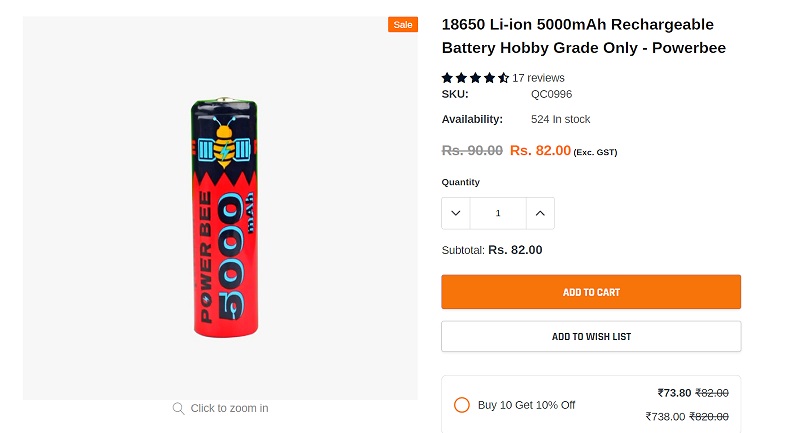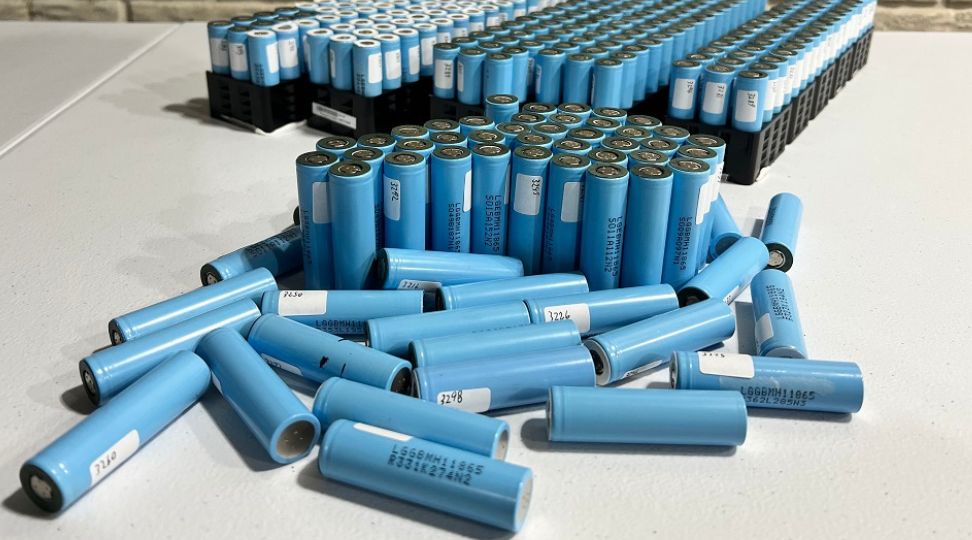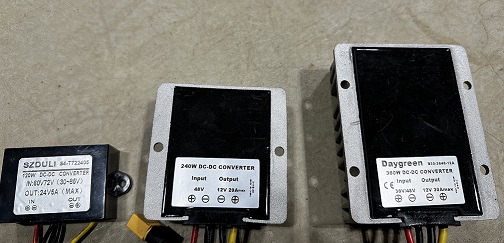
What is the highest capacity 18650 battery?
Table of Contents
The highest capacity commercially available 18650 is the Panasonic NCR18650G (3600mAh). The closest runner-up is the LG INR18650-M36 which is around 3550 maH. New higher capacity 18650 cells have been found and tested by us! See below for where you can buy them.
The two above are rather hard to get so the highest capacity 18650 cells you can buy would be the Sanyo 18650GA, LG MJ1, Molicel M35A, and the Samsung 35E.
If you see manufacturers claiming capacities above these figures, they may be misleading or inaccurate. There is a 4000 maH 18650 that was recently announced, you can find it at the link below.
[[ aff type=aff ~ link=https://shrsl.com/4ngsw ~ title=`Xtar 4000mAh ~ image=https://admin.cellsaviors.com/storage/xtar-4000mAh-18650-cell.jpg ~ description=`The highest capacity 18650 we have been able to find on the market!! 3800-4000mAh in our testing. ` ~ height=small ~ buttonText=`Check Price` ]]
In our testing, these Xtar cells would have between 3900 & 4000mAh, the only downside is they are protected cells. These high-capacity 18650 cells would be great for use in flashlights or other small electronics like a fast-charge USB battery bank.
The Evolution of 18650 Battery Capacities
Over the years, the capacity of 18650 batteries has significantly evolved due to advancements in battery manufacturing technology. When they first came out, 18650 cells had a capacity of around 1200mAh. As the battery chemistry and methods to manufacture the cells advanced, the capacity of the average 18650 slowly increased over time. Eventually, we will have 4.5Ah and even 5Ah+ 18650 battery cells, but that day is unfortunately not today.
[[ aff type=aff ~ link=https://bmsbatteries.com/product/samsung-inr-18650-35e-3500mah-2c-lithium-ion-battery/?wpam_id=7 ~ title=`Samsung 35E` ~ image=https://admin.cellsaviors.com/storage/Samsung-35E.jpg ~ description=`The best price, for this very high-capacity 18650 cell. It can handle 8amp continuous discharge and burst to 13amps. Use discount codde CS5 for 5% off! ` ~ height=small ~ buttonText=`Check Price` ]]
Determining 18650 Battery Capacity
Battery capacity is a measurement that represents the amount of energy that a battery can store, represented in milliampere-hours (mAh) or amp-hours (aH). This capacity signifies how long a battery can deliver a certain amount of current before it runs out of energy. For example, a 1000mAh battery could supply a current of 1000 milliamps (1 amp) for one hour, or 500 milliamps (half an amp) for two hours.
To determine a battery's capacity, a specific method is typically utilized. Batteries are subjected to a constant current load over a predefined period, a process often termed a capacity test. This current is usually minimal, ranging between 300 and 800 milliamps, and the test is typically conducted for about 5 hours. For example, if a battery cell can maintain a 600 milliamp current for 5 hours, it would be said to have a capacity of 3000mAh, or equivalently 3Ah. This capacity test provides a standardized way to compare the energy storage capabilities of different batteries.
At home you can buy a 18650 tester and charger to establish capacity, it won't be as accurate as lab-grade equipment but you will get a good measurement.
It’s important to note, however, that higher discharge rates produce more heat which lowers a batteries efficiency and complicates several other key factors. Because of this, you won't ever get a battery’s rated capacity if you discharge it at several multiples of its capacity. For example, a 3000 mAh cell is rated for 3000 mAh at a 0.2C discharge rate (600 ma). If you increase this rate to 5 or 10 amps, you will measure less capacity than 3000 mAh.
Factors to Consider When Choosing a High Capacity 18650 Battery
When selecting a high-capacity 18650 battery, the highest mAh rating shouldn't be the only factor to consider. This is because there are predatory manufacturers and distributors that intentionally and knowingly lie about the battery capacity. For example, look at this listing.
This battery simply cannot exist. There is just no currently possible way to fit that many milliamp hours into that small of a space. These predatory actors will say anything they can to get your money. Not only will the cell not have the claimed capacity, but it will have a high internal resistance and will get very hot under normal operation. In some extreme cases, these cells can be packed with sand to make them weigh as much as a normal cell.
Check out this even more impossible listing:
These websites are designed to look reputable and they will indeed ship you the products that you order. The problem is that the performance of the products they ship never matches up to the expectations. The worst part about the whole situation is that they prey on uninformed consumers who don’t know any better. If you don’t know how to test cells and have no bearing on how long a given amount of milliamp hours are supposed to last, then you will have no way of knowing you are getting taken advantage of.
When that graphene-based 18650 finally hits the market, we will for the first time have a real 18650 cell that has a capacity above the ~4000mAh battery. Until then, any listing that shows a 18650 has more capacity than that is a fake battery listing that should be avoided.
There is More To An 18650 Than High Capacity
Even when dealing with totally legitimate cells from reputable sources, capacity is far from the only figure that you need to consider. Current carrying capacity is also important, and it’s something to note that generally speaking, the higher capacity a cell is, the lower amount of current it can support. This is not always the case, but those two metrics are often inversely proportional to each other.





